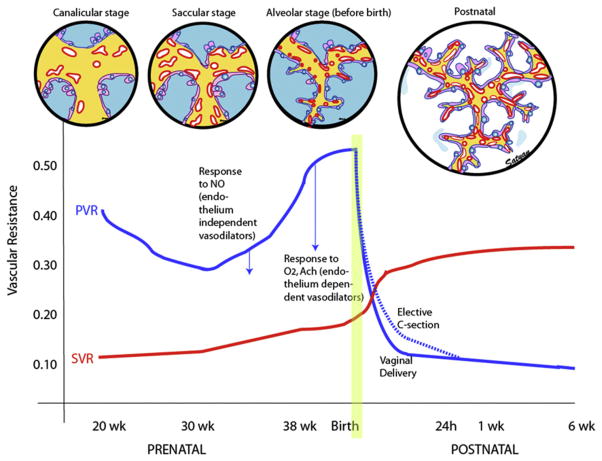Fig. 1.
Changes in PVR and systemic vascular resistance (SVR) during the last half of gestation and the postnatal period. During the canalicular phase of lung development, high PVR is caused by low density of the vasculature. In the saccular stage, broad intersaccular septae contain the double capillary network and, with increasing vascular density, PVR decreases. In the alveolar phase, despite the rapid increase in the number of small pulmonary arteries, high PVR is maintained by active vasoconstriction. Fetal pulmonary vasodilator response to endothelium-independent (direct smooth muscle relaxant) vasodilators such as NO precedes the maturation of the vasodilator response to oxygen and acetylcholine (Ach), endothelium-dependent vasodilators. After birth, lung liquid is absorbed and an air-liquid interphase is established with juxtaposition of capillaries and alveolar epithelium to promote effective gas exchange. The dashed line represents the delay in decrease of PVR observed following elective cesarean section. SVR markedly increases after occlusion of the umbilical cord and removal of the low-resistance placental circuit from the systemic circulation. (Copyright © Satyan Lakshminrusimha.)

